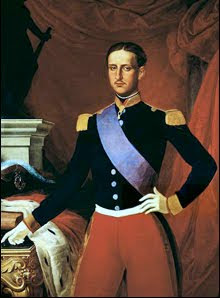 |
San Demetrio slaying Lyaeus
|
In the Byzantine Synaxarion, October 27th is the Feast of San Nestore di Tessalonica, Hero and Martyr. Born in the third century in Constantinople or Thessaloniki, Macedonia, he was a disciple of the Holy Martyr San Demetrio di Tessalonica.
According to tradition, San Demetrio was denounced as a Christian and arrested, perhaps to be used in the gladiatorial games in Thessaloniki. At the time, Christian captives were being forced to fight the hulking Vandal Lyaeus in the arena if no-one dared to face him of their own accord. With a penchant for impaling his opponents on spikes, it wasn't always easy to find someone willing to do battle with the notorious gladiator.
Looking to prevent the murderous brute from killing any more Christians, San Nestore visited his master in prison to get his blessing. Signing his forehead and chest with the sign of the cross, San Demetrio prophesied, “You will defeat Lyaeus, but you will suffer for Christ.”
As Lyaeus entered the arena to thunderous applause, Emperor Maximian silenced the crowd and introduced his champion. Making his usual wager to entice would-be challengers, the Emperor offered a huge reward to anyone who could defeat the allegedly invincible warrior in hand-to-hand combat.
Stepping forward, San Nestore volunteered to fight Lyaeus. The crowd roared with laughter at the sight of the diminutive youth. Attributing the boy’s foolhardiness to poverty and desperation, Maximian tried to dissuade him, claiming the clash would be suicide for one so small and weak. Underestimating the stripling’s determination, he offered San Nestore the purse without having to fight or risk his life.
Undeterred, San Nestore repeated his challenge saying he did not need or want the Emperor’s money; he just wanted to prove that he was better than Lyaeus. Curious to see what would happen, the Emperor allowed the seemingly mismatched combatants to fight.
Facing off on a large platform surrounded by a pit filled with stakes, spears and other sharp weaponry, San Nestore crossed himself and invoked the name of God, which greatly irritated Maximian.
Narrowly dodging the gladiator’s relentless attack, San Nestore found a brief opening and mortally wounded the barbarian. Crumpling to the ground at the boys feet, the crowd began cheering for the Christian, which further drew the ire of the Emperor. Casting Lyaeus down from the platform into the pit, the fiend was impaled on the blood-stained spikes he so often used to slay his Christian victims.
Mortified, Maximian stormed out of the arena bristling with rage. First he had San Demetrio run through with a spear then, instead of rewarding the victor, he ordered his guards to capture the Christian hero and had him beheaded with his own sword.
In celebration, I’m posting the prayers to San Nestore from Byzantine Catholic Prayer for the Home [link will open PDF file]. They are meant for private use. The accompanying photo, courtesy of Cav. Charles Sant’Elia, is a Greek terracotta tablet with bas-relief depicting San Demetrio on horseback slaying Lyaeus. Though San Demetrio did not physically slay Lyaeus, it was through his prayers that San Nestore was able to defeat the fearsome gladiator. San Nestore di Tessalonica, ora pro nobis.
Troparia
Troparion Tone 3 You took up the power of the cross from the great Demetrius and you ventured forth against the giant. His terrible strength did not save him, but he was struck down by you. They killed you for this, holy martyr, but your bravery ushered you in before Christ. O Nestor, pray for our peace and for mercy on us all!
Kontakion Tone 2 Having perfectly endured your martyrdom, you have inherited immortal glory. You have become a perfect soldier for the Master through the prayers of the great Demetrius. Join him, blessed Nestor, and pray without ceasing for us all.
Stichera
O wondrous martyr Nestor, you girded yourself with the armor of Christ. Then you overcame Leo the emperor. By visible and invisible arrows you fettered Satan and put him to death, O greatly-gifted one. Because of that, Christ crowned you with the crown of victory.
Glory be...now and ever...We implore you, our most pure Intercessor, never allow your sorely afflicted servants to perish. But hasten to snatch us from the forthcoming wrath and grief. O most holy and pure Theotokos, you are our rampart and invincible help.















































